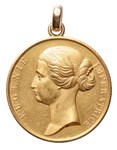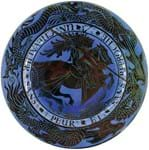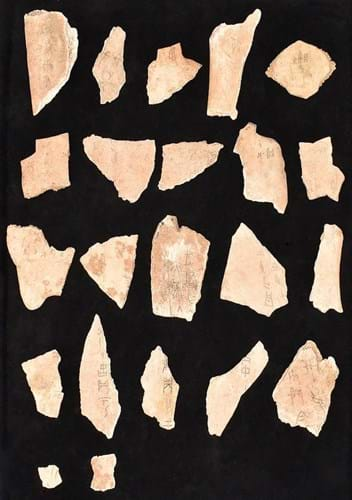
A collection of 22 Shang dynasty oracle bones or jiaguwen sold for £21,000 at Alastair Gibson Auctions came for sale by descent from Lieutenant Colonel George Douglas Gray (1872-1946).
The Shang period (c.1600-1045BC) is the first of China’s many epochs from which written documents survive.
Some inscriptions – the root of modern Chinese writing – are found on bronzes of the period, but most take the form of inscribed bone fragments used for divination.
Oracle bones or jiaguwen, fashioned from carefully prepared turtle shell or water buffalo bone, were first found in an archaeological context in the early 20th century. They confirmed the site of the last Shang capital city of Yinxu, near modern-day Anya, revealed a mature writing system using grammar and over 5000 different characters and shed light on a once commonplace ritual activity.
The oracle bone divination ceremony was used to seek guidance from deities or ancestors on topics ranging from military strategy and the harvest to the cause of toothache.
While unquestionably among the most exciting items that have survived from ancient China, jiaguwen do not come to market very often.
Menzies connection
The collection of 22 bones that was offered by Alastair Gibson Auctions (25/12% buyer’s premium) in London on July 6 came for sale by descent in the family of Lt Col George Douglas Gray (1872-1946).
A British Army medical officer who set up a volunteer hospital in Peking from 1902-15, he was also a contemporary of Staff Captain James Mellon Menzies (1885-1957), a Canadian Presbyterian missionary and archaeologist considered the first Western scholar to study Shang bone script.
Menzies’ book Oracle Records from the Waste of Yin was first published in 1917, at a time when hoards of jiaguwen turned up the plough were sold by local farmers as ‘dragon bones’ for use in traditional medicine.
It is quite conceivable that this group of oracle bones may have been a gift from Menzies to Gray during their service together.
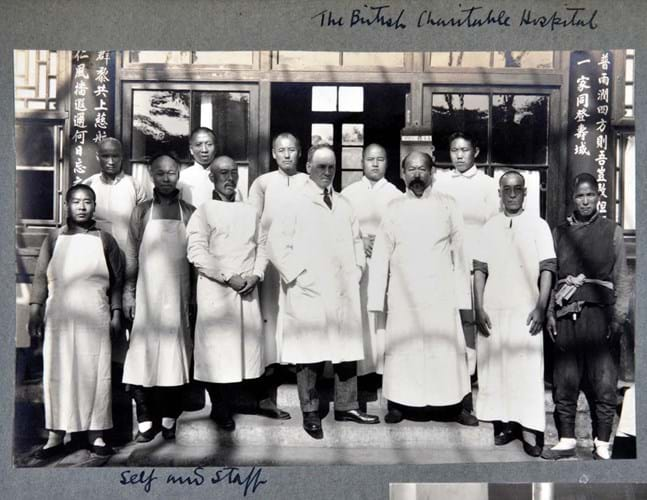
A collection of 22 Shang dynasty oracle bones or jiaguwen sold for £21,000 at Alastair Gibson Auctions came for sale by descent from Lieutenant Colonel George Douglas Gray (1872-1946), an Army medical officer who set up The British Charitable Hospital in Peking. He is pictured centre flanked by members of staff.
The collection – the largest 8cm across, the smallest just 1.5cm – was competitively estimated at £4000- 6000 and following a flurry of bidding was hammered down to a Chinese mainland buyer at £21,000.
From the same source was a particularly fine Kangxi (1662-1722) underglaze blue, copper red and celadon brush pot.
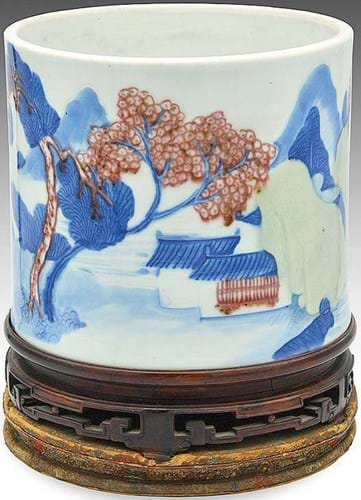
Kangxi underglaze-blue, copper-red and celadon ‘landscape’ brushpot – £38,000 at Alastair Gibson Auctions.
Measuring 6in (15cm) high and 7in (18cm) across, it was painted and carved with a continuous classical landscape scene with mountains, pagodas, boats and a waterfall. It sold in good condition for £38,000 (estimate £15,000-20,000).
Provenance is a key element to success in the Chinese market but occasionally an object’s history can be a little too emotive. As reported in ATG, the emperor Xianfeng’s silver hunting flask with a Second Opium War provenance was pulled from the sale at the request of the office of the Yuanmingyuan (Old Summer Palace), Beijing. However, the auction house has since confirmed the flask, offered on behalf of a small regimental museum and guided at £60,000-80,000, was sold by private treaty sale shortly after the auction ended.
Private source
This was Gibson’s second sale of Asian art. Comprising several private collections, the 223 lots recorded a total of £578,500 and a selling rate of 80%.
From a UK private collection came both a textbook Kangxi blue and white rouleau ‘landscape’ vase, 19in (48cm) high, sold just below hopes at £14,500 and a famille verte ‘touhu’ brush pot that, although catalogued as Kangxi period, was probably a little earlier.
The latter, a 7in (17cm) polychrome piece painted with a scene of ladies and official playing a game of pitch pot (an unusual subject representative of passing exams), employs the green, iron red, yellow, black and turquoise enamels popular in the late Ming ‘Transitional’ period. It sailed past its £3000-5000 estimate to sell to a Chinese mainland buyer for £31,500.
The auction concluded with a 51-lot section from the Mujintang collection of Chinese Export ceramics.
Offered without reserve, the group of wares from a Taiwanese collection trebled the low estimate to bring just over £50,000. Despite restoration to a break and a hairline, a rare famille-verte Dutch-market barber’s bowl sold to the London trade for £3700 against a pre-sale estimate of £1500-2500. Dating from the end of the Kangxi period c.1710-20, it is painted with the arms of Holland within a border of butterflies and peonies and five vignettes enclosing goats and cockerels.
A similar bowl, with the arms of Meggelen, is illustrated in China for the West (1978) by David Howard and John Ayers and subsequently sold at Christie’s New York as part of the Hodroff Collection of Chinese Export Porcelain, lot 18, January 24, 2007 for $20,400.
A plate decorated with a Commedia dell’Arte c.1725 marking the burstng of the South Sea Bubble ssold for £1800 while a group of Qianlong en grisaille ‘Jesuit’ wares included a Crucifixion plate sold for £1,500 (estimate £400-600).
The second part of the Mujintang collection will be offered by the auction house in the late autumn.




